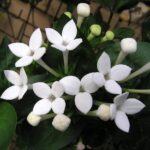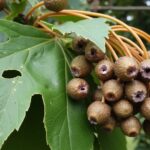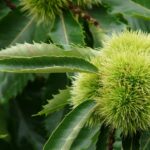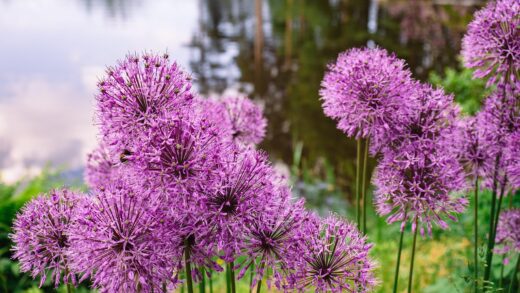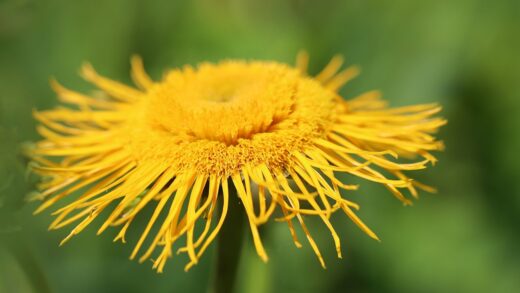The light requirement of the Golden Rain Tree is the most straightforward and non-negotiable aspect of its cultivation: it demands full sun. This fundamental need is deeply ingrained in its genetic makeup, stemming from its origins in the open woodlands and sunny slopes of East Asia. For a plant, light is not merely a preference but the essential source of energy for life, and for the Golden Rain Tree, an abundance of direct sunlight is the primary catalyst for the physiological processes that result in vigorous growth, a dense and well-formed canopy, and, most importantly, the spectacular profusion of golden-yellow flowers that gives the tree its name. Understanding and respecting this absolute need for sun is the first and most critical step in selecting a planting site that will allow the tree to reach its full ornamental potential. Any compromise on light exposure will invariably lead to a compromise in the tree’s performance and beauty.
Photosynthesis is the biochemical process by which plants use sunlight, water, and carbon dioxide to create their own food in the form of sugars or carbohydrates. These sugars are the fuel that powers every aspect of the tree’s existence, from the growth of its roots and leaves to the production of flowers and seeds. A Golden Rain Tree planted in full sun, which is defined as receiving at least six to eight hours of direct, unfiltered sunlight per day, is able to maximize its photosynthetic output. This abundance of energy translates directly into a healthier, more robust tree that is better equipped to withstand environmental stresses such as drought, pests, and diseases.
The visual appeal of the Golden Rain Tree is inextricably linked to its light exposure. The density of its foliage, the graceful, rounded shape of its canopy, and the sheer volume of its floral display are all direct products of high light levels. A tree that is bathed in sunlight from all sides will develop a symmetrical and balanced form. In contrast, a tree that receives light from only one direction may grow lopsided as it reaches for the sun. The intensity of the summer flowering is also directly proportional to the amount of sunlight the tree receives; more sun equals more energy for flower production, resulting in a truly breathtaking display.
Furthermore, adequate sunlight plays a crucial role in the tree’s health by helping to prevent certain diseases. Fungal pathogens, such as those that cause leaf spot and powdery mildew, thrive in damp, shady, and stagnant conditions. A location in full sun allows the foliage to dry off quickly after rain or morning dew, creating an environment that is far less hospitable to these diseases. The open, airy canopy that develops in sunny conditions also promotes better air circulation, which is another key factor in disease prevention.
The critical role of full sun exposure
The term “full sun” is not a loose guideline for the Golden Rain Tree; it is a mandatory requirement for optimal health and flowering. When a tree is sited in a location where it receives unobstructed sunlight for the better part of the day, it is able to function at its peak physiological capacity. This means that all its systems, from root development to leaf production, are operating efficiently. The energy generated through photosynthesis is not only used for immediate growth but is also stored in the roots and woody tissues, creating a reserve that helps the tree survive dormancy and fuel its initial growth spurt in the spring.
More articles on this topic
The most dramatic and celebrated impact of full sun exposure is on the tree’s flowering. The Golden Rain Tree produces its large, upright panicles of yellow flowers on new wood, meaning the growth that occurs in the current season. High light levels stimulate the production of numerous healthy shoots, each with the potential to terminate in a flower cluster. A tree in a shady location will produce far fewer shoots, and those it does produce may lack the vigor and stored energy needed to form flower buds. This is why a Golden Rain Tree grown in even partial shade may produce lush green leaves but will offer a disappointing and sparse flower show, if it flowers at all.
Beyond flowering, full sun exposure is essential for the development of a strong and resilient structure. Trees grown in adequate light develop sturdy, thick stems and a balanced branching pattern. They are better able to support their own weight and are less susceptible to damage from wind or the weight of ice and snow. The energy produced in sunny conditions allows the tree to allocate resources to building dense wood, which contributes to its overall longevity and stability in the landscape.
Finally, the other seasons of interest are also enhanced by full sun. The unique, lantern-like seed pods that follow the flowers will develop their best pinkish-bronze color when exposed to sunlight. Similarly, while the autumn color of the Golden Rain Tree can be variable, it is generally most vibrant and reliable on trees that have received ample sunlight throughout the growing season. The production of the pigments responsible for fall color is an energy-intensive process that is fueled by the sugars created during the sunny days of late summer and early autumn.
Effects of insufficient light
When a Golden Rain Tree is planted in a location that provides less than the required six hours of direct sunlight, it will exhibit a range of predictable and undesirable symptoms. The most immediate and noticeable effect is on the tree’s growth habit. In a process known as etiolation, the tree will stretch and strain towards the available light source. This results in a weak, “leggy” appearance, with elongated, thin branches and sparse foliage. The overall form of the tree will be irregular and often lopsided, lacking the dense, rounded canopy that is characteristic of a healthy specimen.
More articles on this topic
Insufficient light directly impacts the tree’s energy budget, and one of the first things to be sacrificed is the production of flowers. Flowering is a very energy-intensive process, and a tree that is struggling to produce enough food through photosynthesis will conserve its resources for essential survival functions, such as basic leaf and stem growth. As a result, a Golden Rain Tree in a shady spot will produce very few flowers, or more commonly, no flowers at all. Gardeners who plant this tree specifically for its magnificent summer bloom will be deeply disappointed if it is not given the sun it needs.
A tree growing in low-light conditions is also more vulnerable to health problems. The weak, stretched-out growth is structurally unsound and more prone to breaking. Furthermore, the reduced energy reserves mean the tree has a compromised ability to defend itself against pests and diseases. It will be slower to heal from wounds and less able to compartmentalize or fight off infections. The shady, damp conditions also create a more favorable environment for fungal diseases like powdery mildew and leaf spots, further taxing the already stressed tree.
The foliage on a shade-grown Golden Rain Tree will also be different from that of a sun-grown counterpart. The leaves may be larger and thinner as the tree tries to maximize the surface area for capturing what little light is available. However, they will often be a paler shade of green due to lower concentrations of chlorophyll. The overall appearance of the tree will be thin and anemic, lacking the vibrant, lush look of a tree that is thriving in the bright conditions it is adapted to.
Site selection for optimal light
The process of selecting a planting site for a Golden Rain Tree must begin and end with an honest assessment of the available sunlight. This is not something that can be corrected later with pruning or fertilizer; the location must be right from the start. Before planting, it is essential to observe the proposed spot throughout the day to track the path of the sun and identify any periods of shade. Remember to consider the sun’s path at different times of the year; the low angle of the winter sun casts much longer shadows than the high sun of summer.
The ideal location is an open area, far from the shade cast by large buildings, mature trees, or other structures. A position in the middle of a lawn, on the south or west side of a house (as long as it is far enough away from the structure itself), or as a street-side tree are all excellent choices. When planting in a mixed border, ensure that the Golden Rain Tree will not be overshadowed by taller, faster-growing neighboring trees as the landscape matures. It is often best to position it as one of the taller elements in the design, where its canopy can rise above smaller shrubs and perennials.
When planning for a new tree, it is also important to anticipate future sources of shade. A small, newly planted tree nearby might not cast a shadow now, but in ten or twenty years, it could grow to completely shade the Golden Rain Tree. Consider the mature size and growth rate of all the plants in the surrounding landscape. This forward-thinking approach to site selection is crucial for the long-term success and health of the tree, preventing the need for costly removal or relocation in the future.
If a full-sun location is simply not available on your property, it is better to choose a different species of tree that is adapted to partial shade rather than trying to force a Golden Rain Tree to grow in unsuitable conditions. There are many beautiful ornamental trees that thrive in lower light levels. Forcing a sun-loving tree like Koelreuteria paniculata to live in the shade is ultimately a disservice to the plant and will only lead to a weak, unhealthy, and non-flowering specimen. Choosing the right plant for the right place is the fundamental principle of successful gardening.
Light considerations for young versus mature trees
While the requirement for full sun is consistent throughout the life of a Golden Rain Tree, there can be subtle differences in how young and mature trees respond to light conditions. Very young seedlings or newly transplanted trees can sometimes benefit from a small amount of protection from the most intense, scorching afternoon sun, especially in very hot climates. This is not because they prefer shade, but because a young tree with a still-developing root system can sometimes lose water through its leaves faster than its roots can absorb it, leading to leaf scorch. However, this is a temporary state, and the primary goal should still be to plant it in a location that will provide full sun once it is established.
As the tree grows and establishes a deep and extensive root system, its ability to tolerate heat and direct sun increases. A mature Golden Rain Tree is exceptionally well-adapted to hot, sunny conditions and will not suffer from sun scorch as long as it has access to adequate moisture deep in the soil profile. The focus for a mature tree shifts to ensuring that it continues to receive light from all sides to maintain a balanced and symmetrical canopy. Over time, neighboring trees may grow and begin to cast shade on one side of the Golden Rain Tree, which can cause that side of the canopy to thin out.
Pruning can sometimes be used to manage light conditions around a mature tree. For example, if a neighboring tree begins to encroach and cast shade, it may be possible to selectively prune the branches of the neighboring tree to allow more light to reach the Golden Rain Tree. Similarly, the lower branches of the Golden Rain Tree itself can be removed—a process called “crown lifting”—to allow more light to reach plants growing underneath it, though this does not change the light conditions for the tree’s own canopy.
Ultimately, the light requirements do not diminish with age. A Golden Rain Tree that has grown for years in a sunny location will begin to decline if the light conditions change significantly, for instance, if a fast-growing evergreen is planted nearby. The tree will respond by thinning out its canopy, reducing its flower production, and becoming more susceptible to stress-related problems. The need for abundant sunlight is a lifelong constant for this species, from the moment it germinates to the day it reaches full maturity.
📷 Flickr / Szerző: Plant Image Library / Licence: CC BY-SA 2.0








